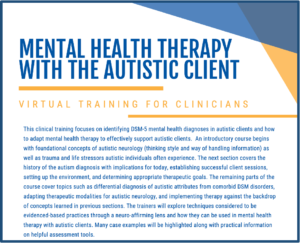The next series of blogs and the release dates are as follows:
AUTISTIC SOLUTIONS RELATED TO TAKING IN INFORMATION
Part One: Using Words to Make Pictures (January 13, 2023)
Part Two: Using Words to Describe Pictures (February 10, 2023)
Part Three: When Feelings Are Too Big (March 10, 2023)
Part Four: Examples Using Paint Chip Visual Supports (April 7, 2023)
Part Five: Direct Instruction of Social Information (May 5, 2023)
Many autistic readers do well in terms of comprehension when they are younger. I think this is because when a child is read picture books the words he hears match the picture he can see on each page. Furthermore, the picture serves to highlight the words salient to the story. Then, pictures start falling away as the child grows older and starts reading more difficult books. In the United States this happens in third and fourth grades. You can go to any elementary school and look at the textbooks used in second, third, and fourth grades and observe this phenomenon of lots of pictures to support text at the second grade level, significantly fewer pictures to support texts at the third grade level and almost no pictures at all at the fourth grade level.
Most third and fourth graders adjust to this falling away of pictures. Some have become language-based thinkers so their brains do fine without picture support. Others remain visual thinkers, but their brains automatically create pictures from the words they read. Autistics have brains that work differently in that they do not always automatically create pictures from the words they read. They often need to be directly taught to do this.
Direct teaching can be as simple or as involved as need be to match the needs of the student. Simply stopping at the end of a paragraph to draw out the picture of the words is helpful to some students. I use a dry erase board as it allows us to easily make changes to the story picture as the story progresses. After a time of seeing how drawing out the story works students can be encouraged to draw and change the picture in their head. Additionally, the previously discussed strategy of layered thinking has been helpful to many.
The Lindamood-Bell program called Visualizing and Verbalizing teaches students to visualize images when they read and when they hear language. This works well for students who are visual thinkers and need a more formal instructional program. “People with autism are relatively better at visual-spatial processing, and this intervention facilitates the use of such strengths to ultimately improve language comprehension” (Lindamood & Lindamood, 1975).
Selection from: Autistically Thriving: Reading Comprehension,
ConversationalEngagement, and Living a Self-Determined Life
Based on Autistic Neurology, pg. 139-140.
(The next blog in this series, Using Words to Describe Pictures, details a clinical example of how supporting one autistic student to get the picture in his head into words to tell me.)
Note: The author is a mental health therapist and is also autistic. She intentionally uses identity-first language (rather than person-first language), and invites the reader, if interested, to do further research on the preference of most autistic adults to refer to themselves using identity-first language.
If you are a clinician and interested in learning more about therapy with the autistic client please join me along with two of my colleagues in an online course.
CLICK HERE for additional information about Mental Health Therapy with the Autistic Client.
BY JUDY ENDOW
Endow, J. (2021). Executive Function Assessment. McFarland, WI: Judy Endow.
Endow, J. (2019). Autistically Thriving: Reading Comprehension, Conversational Engagement, and Living a Self-Determined Life Based on Autistic Neurology. Lancaster, PA: Judy Endow.
Endow, J. (2012). Learning the Hidden Curriculum: The Odyssey of One Autistic Adult. Shawnee Mission, KS: AAPC Publishing.
Endow, J. (2006). Making Lemonade: Hints for Autism’s Helpers. Cambridge, WI: CBR Press.
Endow, J. (2013). Painted Words: Aspects of Autism Translated. Cambridge, WI: CBR Press.
Endow, J. (2009b). Paper Words: Discovering and Living With My Autism. Shawnee Mission, KS: AAPC Publishing.
Endow, J. (2009a). Outsmarting Explosive Behavior: A Visual System of Support and Intervention for Individuals With Autism Spectrum Disorders. Shawnee Mission, KS: AAPC Publishing.
Endow, J. (2010). Practical Solutions for Stabilizing Students With Classic Autism to Be Ready to Learn: Getting to Go. Shawnee Mission, KS: AAPC Publishing.
Myles, B. S., Endow, J., & Mayfield, M. (2013). The Hidden Curriculum of Getting and Keeping a Job: Navigating the Social Landscape of Employment. Shawnee Mission, KS: AAPC Publishing.
REFERENCE
Lindamood, C. H. & Lindamood, P. C. 1975. Lindamood Auditory Conceptualization Test. Austin, TX: Pro-Ed.
